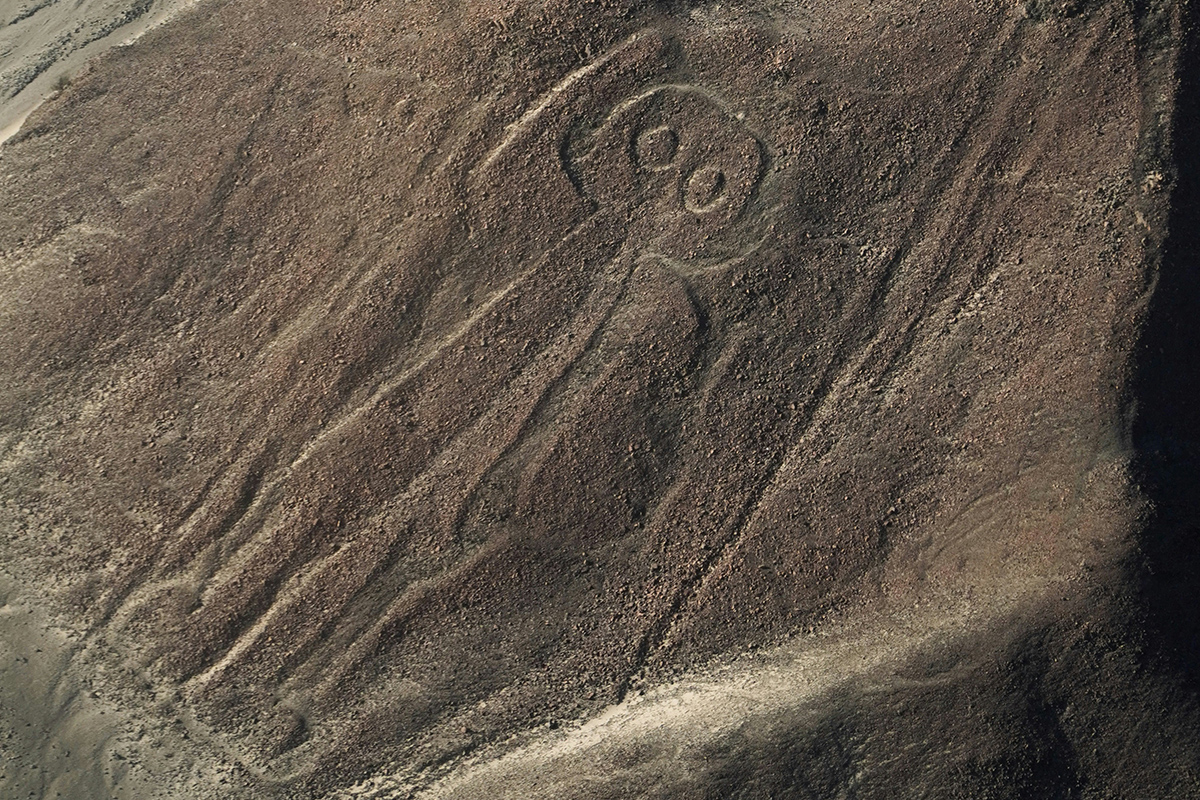- 1300 761 980

Home » Blogs » South America » Paracas and The Nazca Lines – Why So Special?
Located in Southern Peru, the Nazca Lines cover an area of nearly 1,000sq km and the Paracas Candelabra almost 600ft tall. Both remain a mystery still to this day. Here’s what we know…
In the Peruvian desert approximately 400 km South of Lima; there lies a plain between the Nazca and Inca valleys containing the incredibly large approximately 2,000 year old Nazca Lines.

The Nazca lines are Geoglyphs. Geoglyphs are “drawings on the ground made by removing rocks and earth to create a “negative” image” (National Geographic). These lines form a series of shapes and animal figures, only visible from the sky due to their massive size. In the 1930s commercial planes flying over Peru first discovered the Nazca Lines.
The lines were created by removing overlying weathered rocks to reveal the lighter sand beneath. The rocks have oxidised and weathered to a deep rust colour. When the top 12-15 inches of rock is removed, the lighter contrasting sand is revealed. The climate of the desert which receives less than 20 minutes of rain each year, has allowed the lines to remain intact with little to no damage occurring over the years.

These ancient creations are so special for one, remaining largely intact, and two, the only way to see them is from above. So, ancient civilisation would have developed a way to witness their creations.
This is where many theories arise; from a simple hot air balloon to aliens, there are many theories about who created Nazca lines and why.
Etched on the sloping face of a hill at Pisco Bay, the Paracas Candelabra is another famous geoglyph in Peru that also remains a mystery. Visible from 20 km away, the Paracas Canelabra stands approximately 181 metres tall.
While carbon dating of the artefacts surrounding the geoglyph date back to 200 B.C.E, the purpose and creators of the geoglyph are still unknown.
It is highly likely that the artefacts belonged to the Paracas people. Although, not necessarily created by them.
The geoglyph’s name, the “Paracas candelabra” is slightly misleading as there is no evidence to suggest it depicts a candelabra.
One of the more popular theories is that the geoglyph resembles the shape of a trident, created to evoke the ancient Incan God Viracocha. However many believe it resembles the shape of the hallucinogenic plant, “Jimson weed”. One theory is that inhabitants of the Paracas region would travel to the west coast of North America to collect the weed. The candelabra would serve as landmark to help the travellers navigate their way home.
According to early accounts, for many centuries, sailors would often use the Paracas coastline as a stopping point hence many locals believe it was a signal point for sailors. It is believed that sailors would have had plenty of time during layover to carve the Candelabra into the hill.
Despite many theories, to this day the creators and purpose of the Paracas Candelabra remains unknown.
Both the Nazca and Paracas lines are marvels in their own right. If you ever find yourself in Peru, be sure to visit the geoglyphs. Decide for yourself, which of the many theories you believe to be true.
Suite 2, 1st Floor
261-271 Wattletree Rd
Malvern VIC 3144



For tailor-made itineraries or enquiries…